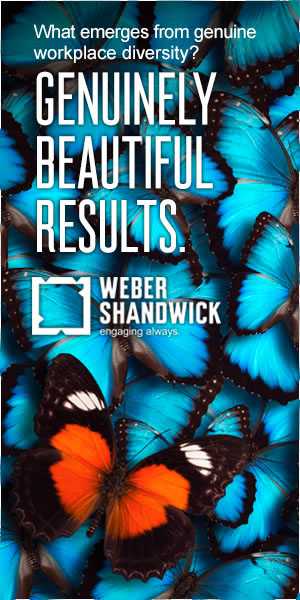Women in film is a complex, contentious topic – it’s no secret that the history of film is overwhelmingly male. Even today, only 7% of filmmakers are women, and most roles, especially the most interesting ones, go to men. And that’s actually a huge step forward from the not-so-distant past, when virtually 100% of filmmakers were male.
But there’s a sea of change coming, one that needs to be nurtured and guided, because it started decades ago, and still hasn’t taken full shape. Here’s how a focus on strong female characters is finally shifting the story of cinema to a more equitable future.
The First Female Action Hero
In 1979, a cinematic year that included action/thriller heavy-hitters like Moonraker, Apocalypse Now, and The Warriors, something interesting happened. A weird action horror hybrid featuring gut-busting monsters designed by Swiss surrealist H.R. Giger rampaged into theaters and scared the hell out of audiences everywhere. It won an Academy Award for Visual Effects, yet otherwise didn’t set the world on fire as far as critical or financial returns. But it made an impression. It got under our cultural skin, and stuck there for decades, growing into a cult classic that became so big it came back around to mainstream success.
Then-unknown filmmaker Ridley Scott’s Alien was special, not just because it had the most terrifying monsters ever put on film. It was special because of Ripley. Virtually every action hero put on screen had been a man before Sigourney Weaver sweated and shot her way through that slimy spaceship, so her casting was a radical choice with far-reaching ripples. In 1984, James Cameron introduced us to heavily Ripley-inspired Sarah Connor in Terminator, then directed Aliens, cementing Sigourney Weaver’s damsel in no distress as an archetype.
Over the years, we’ve seen more and more variations on this strong female archetype, from Buffy Summers to Mulan, from Katniss Everdeen to Furiosa, and something like half the cast of Game of Thrones. This is incredible progress, but in the last few years in particular, a more subtle, complex change has begun.
Strong
The progress made by allowing women to be badass action heroes has been double-edged. Now, many equate “strong female character” with a woman who is literally physically strong, to the point that if a female character can’t incapacitate ten burly lackeys in a succinct, three-minute fight scene, she’s not seen as strong.
That needs to change.
When fiction analysts call a character strong, they are saying it is multi-layered, complex, thoughtfully written and portrayed, three-dimensional. Why should that be different when talking about a “strong female character?”
Indie filmmakers are, as often is the case, leading the charge for change in Hollywood. Filmmaker Luke Sabis’s first feature-length film, Missing Child, a slow-burn thriller featuring an intense, complicated turn from Kristen Ruhlin as its heroine is one such filmmaker.
He says, “In traditional films, women find themselves in treacherous situations only to have some dude in shining armor save them. That’s a nice romanticized idea that does well in the box office but doesn’t reflect what happens in the real world. I wanted a female character that relies on herself to get through tough times. We don’t see that enough in films and it’s what we were going for in Missing Child.”
Sabis is one of a growing wave of new filmmakers who recognize that in storytelling, character is what invests audiences in plot. Characters should be strongly written, regardless of gender.
Strong Female Characters Make Good Money
Women make up over 50% of the US population, which would indicate that they’re probably about half of the movie-going public. So why has it taken so long for media heads to discover that female-led movies, and movies with balanced casts featuring well-written female characters, do really well financially?
From comics to television to movies, people want better female characters in their stories. But studios have had a hard time figuring that out. Filmmaker Shane Black famously wanted a female villain for his Iron Man 3, but the then head of studio, Ike Perlmutter, didn’t think the toys would sell, so he was made to rewrite her male. And this is not an outlier, as women in the industry are beginning to publicly discuss.
Fortunately, the change has begun. Frozen, with a sisterhood-centered plot, complex, interesting characters, and no central Disney-fied love story, was the highest-earning animated film Disney’s ever made, raking in over $300 million domestically. Bridesmaids, with its almost entirely female cast, hit almost 300 million domestically, which is almost unheard of for an R-rated ensemble comedy with a mostly unknown cast. And coming up, Gal Gadot’s portrayal of Wonder Woman is being heaped with the responsibility of saving Warner Brothers’ nearly universally maligned DC comics extended universe franchise.
Women sell. Well-written women sell better. It’s really that simple.
The strong female character’s path in cinema has been a bumpy, difficult one, full of switchbacks and ridiculous obstacles, but through evolving character templates, a new wave of progressive filmmakers, and the convincing power of the ever-persuasive dollar, that story is becoming happier every year.
As a mentor to CEOs worldwide, Adryenn Ashley is directly responsible for adding significant revenue to her clients’ bottom lines. Adryenn founded Wow! Is Me, Inc. after developing a proprietary social media business system that works with both retail and service-based businesses. Her elite consulting clients cover a broad spectrum of industries, including motion pictures, food distribution, and artificial intelligence. Adryenn earned her ‘high tech priestess’ stripes by crashing computers and breaking into banks…at their request, of course. She used her well-honed techniques to turn fan engagement into #SocialTV profits with CrowdedTV, the world’s first crowdfunding platform for broadcast television shows that goes a step further than just raising funds, by raising sponsorship and distribution, too. Using the CrowdedTV methodology, her first show, Wake Up!, went from idea, to airing on national broadcast TV in just 4 months and is in pre-production for Season 2, and starting development on their first 360 sitcom.


